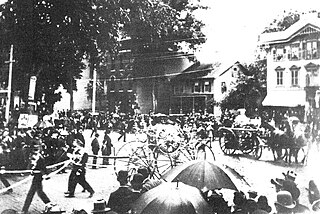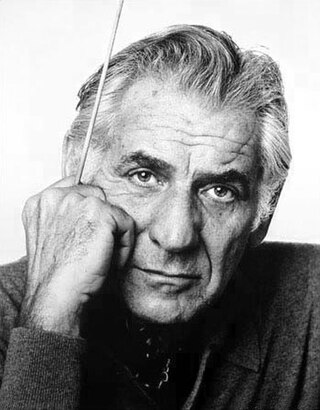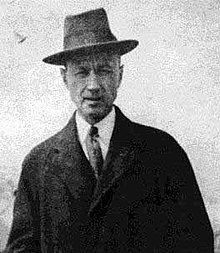
Charles Edward Ives was an American modernist composer, one of the first American composers of international renown. His music was largely ignored during his early career, and many of his works went unperformed for many years. Later in life, the quality of his music was publicly recognized through the efforts of contemporaries like Henry Cowell and Lou Harrison, and he came to be regarded as an "American original". He was also among the first composers to engage in a systematic program of experimental music, with musical techniques including polytonality, polyrhythm, tone clusters, aleatory elements, and quarter tones. His experimentation foreshadowed many musical innovations that were later more widely adopted during the 20th century. Hence, he is often regarded as the leading American composer of art music of the 20th century.
Dmitri Shostakovich's String Quartet No. 8 in C minor, Op. 110, was written in three days.

The Emerson String Quartet, also known as the Emerson Quartet, was an American string quartet initially formed as a student group at the Juilliard School in 1976. It was named for American poet and philosopher Ralph Waldo Emerson and began touring professionally in 1976. The ensemble taught in residence at The Hartt School in the 1980s and is currently the quartet in residence at Stony Brook University. Both of the founding violinists studied with Oscar Shumsky at Juilliard, and the two alternated as first and second violinists for the group. The Emerson Quartet was one of the first such ensembles with the two violinists alternating chairs.
String Quartet No. 1 is a musical composition by Charles Ives. Music historian and theorist Robert P. Morgan wrote that the quartet "was Ives's first mature composition of extended length, and its extraordinary fluency gives ample evidence of his solid control of traditional musical techniques. Moreover, the work is considerably more than a facile exercise based on classical models; there are already indications of the Ives to come, in the extensive quotations and, above all, in the composer's ability to bend the form to suit the idiosyncrasies of his own musical inclinations."
The Hollywood String Quartet (HSQ) was an American string quartet founded by violinist/conductor Felix Slatkin and his wife cellist Eleanor Aller. The Hollywood String Quartet is considered to be the first American-born and trained classical music chamber group to make an international impact, mainly through its landmark recordings. These recordings have long been regarded as among the most outstanding recorded performances of the string quartet repertoire.

Jian Wang is a Chinese cellist. A soloist, chamber musician, recording artist and teacher, he was the first Chinese musician to ever sign an exclusive contract with Deutsche Grammophon.

Robert Carl is an American composer who currently resides in Hartford, Connecticut. He was chair of the composition program at the Hartt School, University of Hartford.
The Cassatt String Quartet was founded in 1985. Originally the first participants in Juilliard's Young Artists Quartet Program, the Quartet has gone on to win many teaching fellowships and awards and has toured internationally. Named after impressionist painter Mary Cassatt, the quartet is based in New York City.

Mohammed Fairouz is an American composer.
Jean François Toussaint Rogister was a Belgian virtuoso violist, teacher and composer.

Stephen Goss is a Welsh composer, guitarist and academic. His compositional output includes orchestral and choral works, chamber music, and solo pieces. His music draws freely on a number of styles and genres. He is particularly known for his guitar music, which is widely performed and recorded.

The Hungarian composer György Ligeti published three string quartets: two string quartets proper and a student piece from 1950 published toward the end of his life. The first two quartets represent his early period, inspired by Béla Bartók, and middle period, which was largely micropolyphonic.
The Blair String Quartet is the string quartet-in-residence at the Blair School of Music of Vanderbilt University, As of 2022, consisting of violinists Cornelia Heard and Stephen Miahky, violist Christina McGann and cellist Felix Wang. They perform frequently at Blair, and have also performed at the Library of Congress, the Kennedy Center, and the Weill Recital Hall. In 1980 the Blair Quartet consisted of violinists Christian Teal and Lee Joiner, violist Kathryn Plummer, and cellist David Vanderkool as members. Prior members also include cellist Grace Mihi Bahng. Stephen Clapp was lead violinist from 1967 to 1972.
Karl Reitz was a German violist. From 1922 until his death, he was principal violist of the Prussian State Orchestra of the Berlin Royal Court Opera. He was known as violist in notable string quartets such as the Busch Quartet and the Deman String Quartet, regarded as one of the most renowned chamber music players of his time.

Hallowe'en, also initially entitled Allegro vivace: Hallowe'en, is a short composition for piano quintet by American composer Charles Ives. It was probably composed in 1907 and was part of Three Outdoor Scenes, a collection of pieces that also included Central Park in the Dark.

The Gong on the Hook and Ladder or Firemen's Parade on Main Street, normally shortened as The Gong on the Hook and Ladder and also initially entitled Allegro moderato, is a short composition by American composer Charles Ives.

Tone Roads No. 1 is a short composition for chamber ensemble by American composer Charles Ives. It was finished in 1911.

Divertimento, or Divertimento for Orchestra, is a suite of eight orchestral bagatelles by American composer Leonard Bernstein. Completed in 1980 and written to celebrate the centenary of the Boston Symphony Orchestra, it is well-known for featuring the notes B and C in most of its melodic material.











